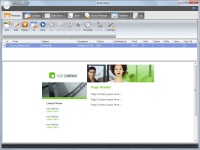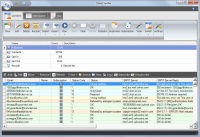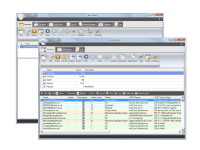mail campaign reports transform raw send-and-forget blasts into dynamic, data-driven strategies. With real-time analytics, you track opens to gauge subject-line performance, clicks to measure content relevance, and bounces to maintain list health—all enriched by geographic, social-sharing, and behavioral insights. Automated dashboards and alerts ensure you spot spikes or drops instantly, while practical examples (e.g., cart-abandonment recovery, onboarding drip successes) illustrate how CTR and conversion metrics guide improvements. Integrate reporting into your automation: use triggers for follow-up emails, A/B test subject lines by send time, and sync data with your CRM for lead scoring. Quarterly deliverability audits, template code reviews, and performance benchmarks drive long-term optimization, ensuring every campaign not only reaches inboxes but also continuously elevates engagement, loyalty, and ROI.
Read MoreBuilding a high-performing, permission-based email list starts with strategically capturing genuine signups—use prominent, friction-free forms on every page, incentivize subscriptions with relevant offers or exclusive content, and leverage blogs, forums, events, and referral programs for organic growth while avoiding purchased lists. Implement double-opt-in confirmation to verify consent, then maintain list health through regular cleaning, re-engagement campaigns, and quarterly audits of bounce and unsubscribe rates. Scale effectively by integrating signup data with your CRM, using exit-intent pop-ups, and employing progressive profiling in automated welcome sequences. By applying behavioral insights on timing and incentives, showcasing real-world case studies, and refining tactics through A/B tests and cross-channel attribution, you build a sustainable, engaged audience that drives higher open and click rates, stronger trust, and lasting business growth.
Read MoreHTML email formatting can dramatically enhance professionalism, trust, engagement, and conversions when done correctly, but missteps like overloading messages with images, failing to optimize for preview panes, embedding broken links, using non-standard coding, or skipping thorough testing can send campaigns straight to spam. To achieve reliable deliverability and impact, maintain a balanced text-to-image ratio, structure content using an inverted-pyramid approach with a “view online” link, verify every hyperlink, adhere to proven HTML standards with inline CSS and descriptive alt text, and test across major email clients and devices. Implement automated testing workflows and dynamic content blocks, apply behavioral insights for scan patterns and mobile responsiveness, and conduct regular template audits, performance benchmarking, and style-guide reviews to keep your HTML emails compliant, accessible, and highly effective.
Read MoreEffective email marketing begins with a clean, permission-based subscriber list managed through advanced opt-in tools: verify and correct addresses to reduce bounces, segment contacts by behavior and demographics to tailor messages, and integrate lists seamlessly with your email platform. Scalable import/export functionality and organic growth via website signup forms, social media embeds, and referral programs expand your audience ethically. Automate targeted workflows—welcome series, cart-abandonment reminders, and reactivation campaigns—to deliver the right message at the right time, while continuous list cleaning and quarterly deliverability audits keep your database healthy. Leveraging these practices boosts open and click-through rates, strengthens engagement, and drives sustainable ROI.
Read MoreOpt-in email marketing relies on explicit subscriber consent—typically via clear signup forms and double opt-in confirmation—to send targeted, relevant messages that comply with regulations and boost deliverability, engagement, and long-term trust. In contrast, spamming—using purchased or scraped lists—harms sender reputation, triggers blacklisting, wastes resources, and risks legal penalties. Ethical campaigns focus on building and segmenting lists around subscriber interests, maintaining a consistent sending cadence, crafting concise, value-driven content, and making unsubscribing easy. By leveraging automation for welcome sequences, cart-abandonment reminders, and reactivation flows, conducting A/B tests, integrating with CRM systems, and auditing deliverability and authentication (SPF, DKIM, DMARC) regularly, marketers create scalable, data-driven email journeys that drive higher open and click rates, foster customer loyalty, and deliver sustainable ROI—while spam tactics backfire with low responses and lasting reputational damage.
Read MoreEmail marketing remains one of the most potent digital channels—but its effectiveness lies in execution: start by defining clear, high-level objectives (brand awareness, lead nurturing, direct sales) and translating them into specific, measurable goals (traffic or conversion targets), then segment your audience by behavior and demographics, craft concise, value-driven content, and allocate resources to the right tools (automation, testing platforms, list management). Layer in behavioral workflows and dynamic content for personalization, integrate with CRM and analytics for attribution, and commit to continuous A/B testing of subject lines, send times, and creative elements. Regularly review deliverability, engagement metrics, and cross-channel performance, and iterate your strategy quarterly—this disciplined, data-driven approach transforms email from a “hit or miss” tactic into a sustainable growth engine that boosts engagement, loyalty, and ROI.
Read MoreAvoid 15 critical email marketing mistakes—from punctuation errors and inbox overload to generic messages, purchased lists, and broken links—by adhering to professional practices: maintain list hygiene and segmentation, balance text and images, use clear sender names, proofread meticulously, include both HTML and text versions, and never spam. Enhance campaigns with practical examples (e.g., targeted reactivation flows), behavioral insights for segmentation, automation tips (dynamic journeys, CRM integration), and quarterly deliverability audits to sustain long-term engagement, optimize deliverability, and drive measurable revenue growth.
Read MoreEmail marketing remains essential due to its adaptability, affordability, and ability to integrate with broader digital strategies: by building permission-based lists, segmenting with behavioral data, and leveraging dedicated newsletter software for rich content, dynamic content blocks, and automated workflows, marketers can execute structured campaigns—from onboarding welcome series and cart-abandonment flows to loyalty programs and milestone emails—that deliver targeted communication, rapid feedback, and sustainable long-term engagement, driving higher open rates, conversions, and customer lifetime value.
Read MoreEmail campaign success hinges on finding the right send times and frequencies tailored to your audience’s routines. Midweek (Tuesday–Thursday) is typically best for B2B and general sends, while weekends can work for B2C niches when tested. Balance mailing frequency—1–4 per month—to avoid fatigue or forgetfulness. Leverage autoresponders for onboarding, confirmations, and cart reminders. Utilize practical send-time examples (e.g., pre-lunch B2B opens, evening B2C clicks), integrate send-time optimization (STO) in your platform, segment by time zone, and automate A/B tests across different windows. Long-term, review quarterly metrics, plan around holidays, and trigger milestone emails for birthdays or anniversaries. By combining strategic timing, behavioral insights, dynamic batching, and automation, you ensure your campaigns reach inboxes at the optimal moment.
Read MoreEmail marketing, one of the internet’s oldest digital strategies, remains indispensable thanks to its targeted reach, instant feedback loops, ease of implementation, and cost-effectiveness; by building permission-based lists and using analytics to monitor opens, clicks, and conversions, marketers can optimize subject lines, send times, and CTAs, while practical tactics like welcome series, cart-abandonment reminders, dynamic content blocks, and automated drip workflows drive engagement and revenue—enhanced further by behavioral segmentation, CRM integration, performance alerts, and quarterly deep dives that transform email into a strategic, long-term growth engine.
Read More

